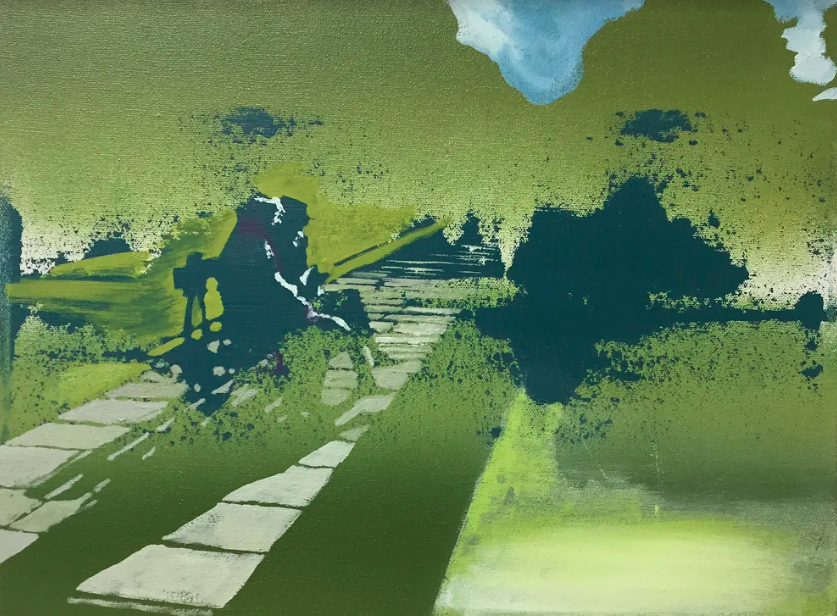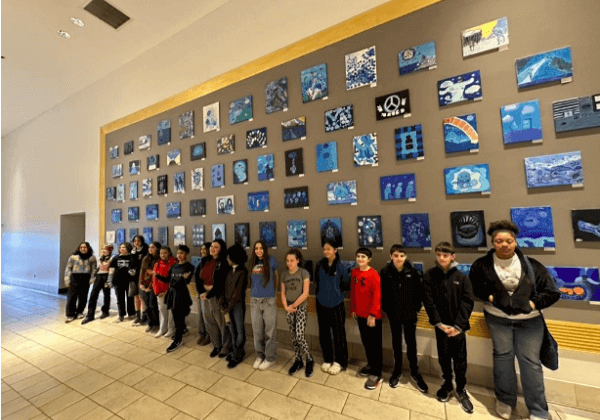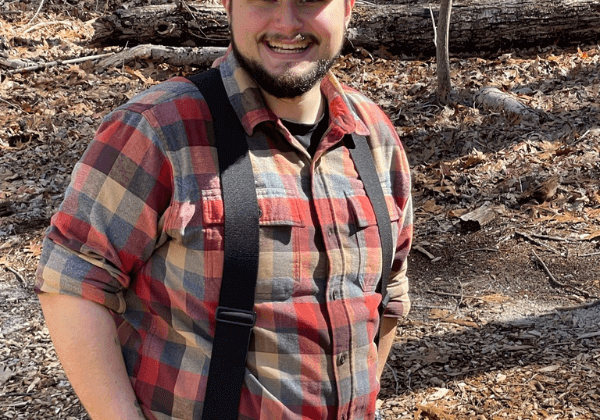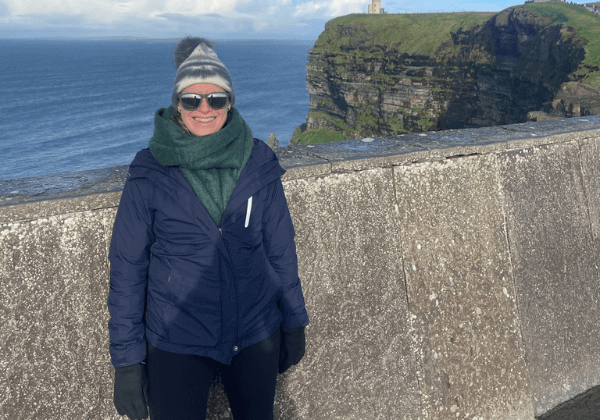Moments and Places That Could Have Been, But Indeed Are – Andrew Fish

What does it mean to take a walk with someone? Is it a time when crucial work takes place, a moment when ideas are shared and discoveries are realized? Maybe it is just a venue for banter and for interpersonal steam to be released. An accompanied walk is also the moment of transition from one place to the next, with someone else there to fill the gaps in our perception. Whatever the reason, walking with another person is a luxury, and can even feel indulgent. In the years I’ve known Andrew Fish and his work, I’ve had the pleasure of strolling, running, and walking with him, and it has been a wonderful gift. I first met Andrew when we were sophomores in college enrolled in the same painting class. From that moment, we became friends and roommates. We shared a studio and worked together at various galleries after college. He even introduced me to my first serious relationship with a woman that would become my wife. My relationship with Andrew outlasted that marriage, and he and I continue to keep an active dialogue going, as if companions on a walk, about the thing that brought us together: painting.
My respect for Andrew Fish’s work, however, goes well beyond the long-term friendship I’ve had with him. I appreciate Andrew’s practice as an artist because of the sheer rigor and diverse visual language he demonstrates as a painter. He effortlessly vacillates between two models of painting – abstract and figurative— without succumbing to one side or the other. He combines these two entities to create work genuinely unique and relates a vision that is reflective of contemporary life. The play between figuration and abstraction conjures certain historical art figures, such as Richard Diebenkorn and Francis Bacon. Among his contemporaries, the earlier works of Doron Langberg come to mind as comparisons, for their use of discordant surfaces and textures.

“Oldest Living Tree in The World”, 2018, oil on linen, 60” x 60”. Image courtesy of the artist.
His paintings are made by building upon forms and gestural marks that suggest various recognizable images and moments. The final paintings are constructed through a calculation of materials, painterly marks, color, and decorative motifs. His silhouettes of figures are distinctively unknown and mysterious. The spaces he creates are recognizable in that they are specific moments, yet they are obscure and fleeting in their anonymity. His colors are brightly saturated and hauntingly depict time. When I look at one of his pictures, I feel certain I have been in the place, but uncertain as to when and where.
Perhaps the work is reflective of the digital age we live in and are a part of. Visual information in our era can be experienced as real—and sometimes misinterpreted as such. Our conscious mind is saturated and inundated with the world as experienced through the pixilated screen. Yet Andrew Fish’s artworks are created in a medium that is the exact opposite of what the content of the images suggest. The work has more to do with the human touch than the digital rendering of a subject. His work is reminiscent of J.P. Hodin’s description of Edvard Munch’s paintings: “Expressionism is in fact a universal style which appears in times of great spiritual tension… in which spiritual experience asserts itself against the tyranny of mathematical thought and technological progress, in fact against the dehumanization and mechanization of culture.”[1]

“Cypress Trees”, 2018, oil on linen, 54” x 60”. Image courtesy of the artist.
In Fish’s work, the process of making the paintings is contained within the central area of the stretched linen, often exposing the ground’s surface. The reveled support of linen on the outer edges frames the various painterly processes and activity. The results bring to mind the paintings of Philip Guston in the 1950s, in which centrally brushed passages shifted between shape, and form. Primed, unaffected areas touched by oil paint were left unattended on the perimeter of the canvases. Joan Mitchell additionally worked consciously with this format and result in mind. What the unfussed edges do is remind us we are looking at an object where an activity of specificity has occurred within the interior of a space.
An excellent example of this can be seen in Andrew Fish’s painting “Cypress Trees” (2018, Oil on linen, 54” × 60”) consisting of a figure standing next to three trees that echo the taxonomy of its title. There are other trees to the left and right of the female figure and the cypress trees. The figure stands in the center of the image and confronts the viewer. When we look at the area that depicts the sky and the ground we recognize these elements are made through a gradation of color: fleshy pink to blue-gray for the sky and lemon yellow to sap green for the earth. The transition of the sky area is rendered using a blending technique to enhance the element of light and air. The area of ground, depicting the possibility of bright sunlight passing through blades of grass, is made with a gradation of color. Upon closer examination, we recognize the passage is actually formed with two passes of what looks like a paint roller loaded with colors. The first descriptive attempt with the roller runs parallel to the bottom edge of the canvas. The second pass runs parallel to the left side of the canvas before curving to overlap the first passage. The described area and surface agitation reinforce that we are looking at a space within the confines of a flat object. We see a similar movement of shape reiterated with a pale blue to gray/white frame at the top of the canvas. This mark becomes reminiscent of a rainbow; however, it works in concert with the lemon-yellow/green at the bottom, making the overall image seem like we are looking at it through a viewfinder. With the amorphous forms and the framing elements, the painting becomes a mirage-like image. It begs the question: Isn’t any particular digital image a mirage?

“Stuff to Buy”, 2018, oil on linen, 60” x 60”. Image courtesy of the artist.
Andrew Fish’s paintings set up for the viewer situations that support and contradict our perceptions, and are reflective of the world we inhabit. The artworks are made with a passion for the lyrical expressionistic qualities of the materials. Only as we absorb ourselves in the various methods and systems he utilizes, we begin to decode the images. To look at and enter into the world he is creating is to indulge, and to see a space that occurs between the artist and the canvas. It resembles the feeling of two people taking a walk, engaged in endless conversation.

“Park Bench”, 2017, oil on canvas, 12” x 16”. Image courtesy of the artist.

“Red Strip”, 2016, oil on canvas, 42” x 42”. Image courtesy of the artist.
[1] J.P. Hodin “Edvard Munch”, Oxford University Press, 1972, Introduction, Page 9



